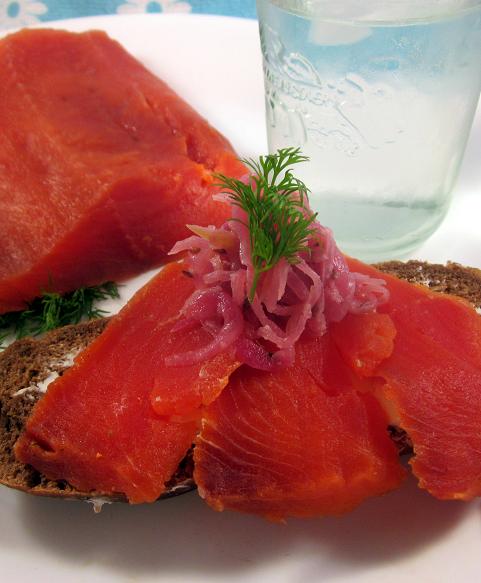 Using salt to draw out the moisture in fish is a technique of preservation that almost every civilisation in human history has employed. The Mesopotamians did it, and passed their techniques on to the ancient Greeks and Romans (who gave us our word cure, from the Latin curare, meaning “to take care of”). First Nations people along both coasts have used salting as their primary mode of preservation along with smoking and sun-drying. It’s the same story with the Portuguese, Irish, Scots and especially the Scandinavians throughout most of their respective histories.
Using salt to draw out the moisture in fish is a technique of preservation that almost every civilisation in human history has employed. The Mesopotamians did it, and passed their techniques on to the ancient Greeks and Romans (who gave us our word cure, from the Latin curare, meaning “to take care of”). First Nations people along both coasts have used salting as their primary mode of preservation along with smoking and sun-drying. It’s the same story with the Portuguese, Irish, Scots and especially the Scandinavians throughout most of their respective histories.
The process is so simple: All you need is a fish, enough salt to cover it and a container in which the alchemy occurs. Even a hole in the ground will do! Over time the salt will kill bacteria and draw out the fish’s moisture thereby allowing it to remain edible for longer periods of time. This tough, jerky-esque product can be further smoked and fermented to increase it’s flavour and shelf-life, but even as is it’s delicious and can last for months!
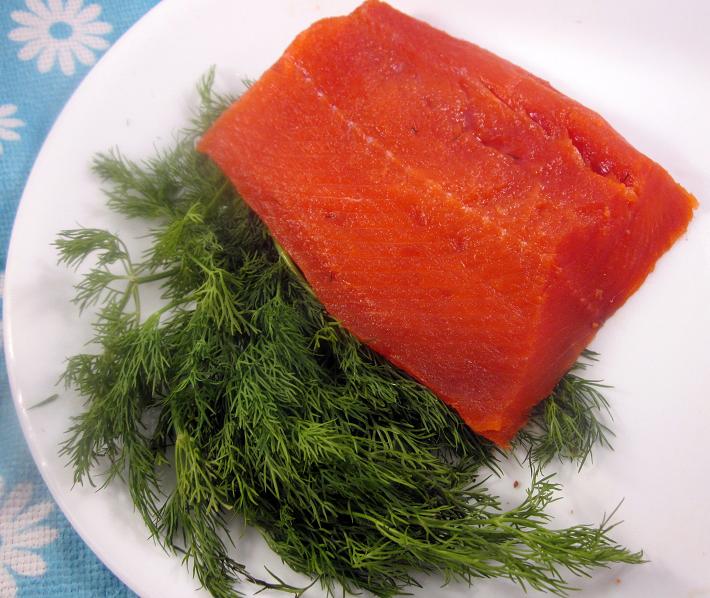 When you come from a culture that relies on fish as your primary protein source it’s an invaluable skill to have in your survival toolkit. It allowed the above societies to stretch their seafood harvests farther, into more protein-starved seasons and kept people alive and well fed during stark winters and long sea voyages.
When you come from a culture that relies on fish as your primary protein source it’s an invaluable skill to have in your survival toolkit. It allowed the above societies to stretch their seafood harvests farther, into more protein-starved seasons and kept people alive and well fed during stark winters and long sea voyages.
What does all this history have to do with my dinner you ask? Well for starters, it just freaking fascinating, so there *humph* Also, I ran across this intriguing bottle of hooch at my local liquor store, and was inspired to go a bit Nordic:
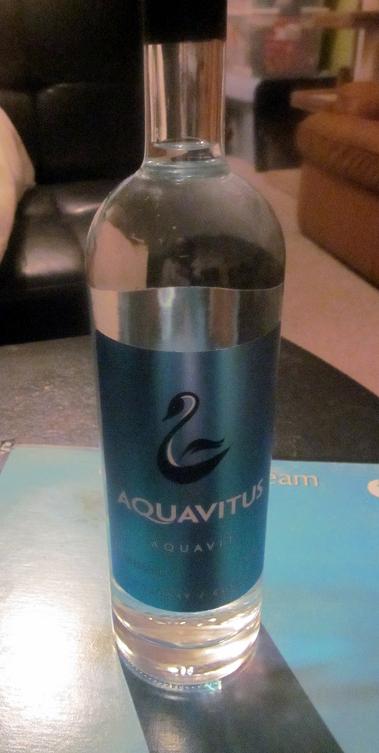 Okanagan Spirits, our very own craft distillery recently began producing their very own version of the Scandinavian classic spirit Aquavit. The clear, fennel, caraway and dill-flavoured digestif packs a punch (think vodka) but with a beautiful anise aroma and finish that makes it the perfect thing to mix into the salt cure for Gravlax, the Nordic version of cured salmon.
Okanagan Spirits, our very own craft distillery recently began producing their very own version of the Scandinavian classic spirit Aquavit. The clear, fennel, caraway and dill-flavoured digestif packs a punch (think vodka) but with a beautiful anise aroma and finish that makes it the perfect thing to mix into the salt cure for Gravlax, the Nordic version of cured salmon.
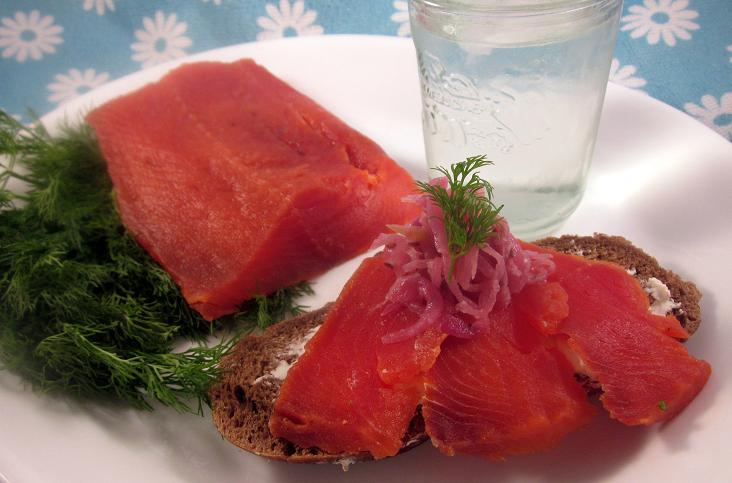 Those crafty Nords jumped on the salt-curing bandwagon back in the middle ages, and have made it a major part of their cuisine. Gravlax is a mashup of the Swedish/Danish/Norwegian words grav (grave) and laks (salmon), referring to the old tradition of fisherman burying their salmon in the salty beaches to cure and ferment. What a beautiful old recipe! It’s the perfect thing to slice onto dark rye bread and savour while laying siege to Paris.
Those crafty Nords jumped on the salt-curing bandwagon back in the middle ages, and have made it a major part of their cuisine. Gravlax is a mashup of the Swedish/Danish/Norwegian words grav (grave) and laks (salmon), referring to the old tradition of fisherman burying their salmon in the salty beaches to cure and ferment. What a beautiful old recipe! It’s the perfect thing to slice onto dark rye bread and savour while laying siege to Paris.
Salt-Cured Salmon with Aquavit and Dill (Serves 4-6 as an appy)
Ingredients
- ¼ cup Kosher Salt
- ¼ cup Sugar
- 1 Tbls. (6 g) Whole Black Peppercorns
- 2 Tbls. (6g) Fresh Dill (finely chopped)
- 1 Tbls. Aquavit
- 12 oz. (340g) Wild Sockeye Salmon Fillet (cleaned, pin-boned and skin removed)
Method
- Mix together the salt, sugar, peppercorns, dill and aquavit in a medium-sized bowl. The texture of this salty mash should be like sand you would find ten feet above the tide at a beach. Dry enough to crumble, but moist enough to form a little ball if squeezed: The perfect texture for making sand castles, and curing salmon.
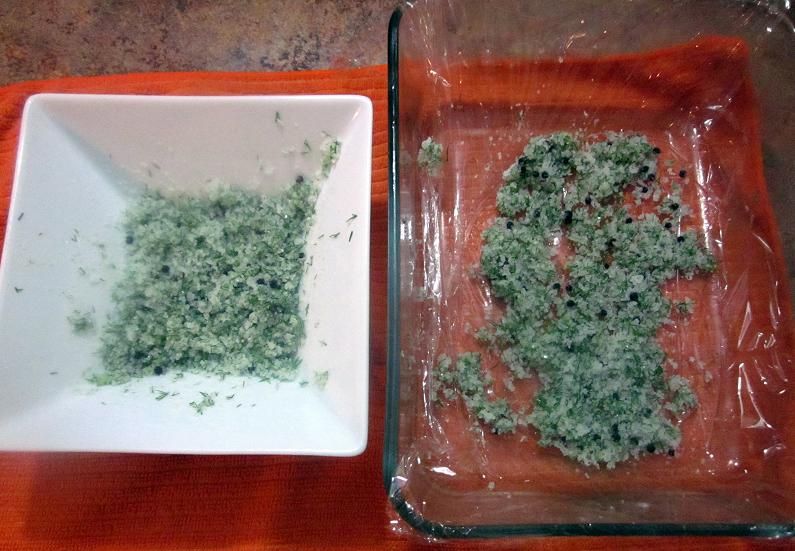
- Lay out two, overlapping sheets of plastic wrap in a non-reactive container (preferably glass) and sprinkle in a handful of the curing mixture in an even layer. Place the salmon on the curing mixture and rub the remaining mix over the top and sides of the fillet. Make sure that all of the surface area of the salmon is evenly covered. Fold the edges of the plastic wrap around the salmon and tightly seal it with the curing mix encased around it. Slap a lid on the container and refrigerate for 24 hours.
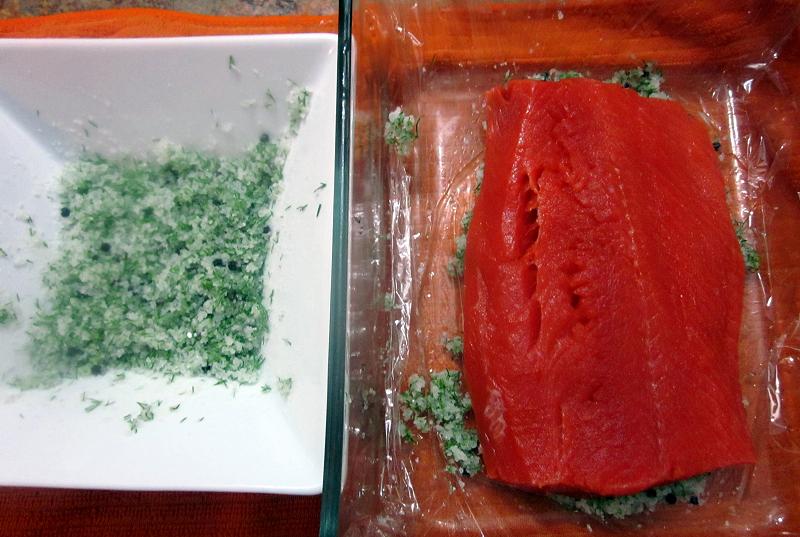
- Remove the salmon from the wrap, discarding the plastic and the (now, much moister) curing mix. Rinse off the salt under cold running water and pat dry with a cloth or paper towel. The surface of the salmon skin should be harder, darker and tacky to the touch.
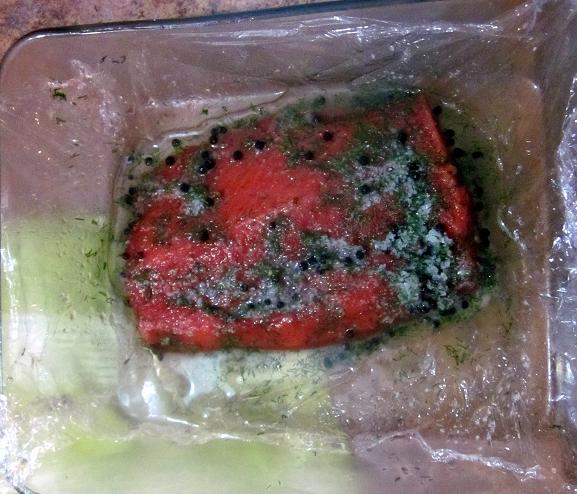
- Grab a sharp knife and slice the salmon at an angle into thin strips. Serve on dark rye bread with a dollop of cream cheese (or the traditional Scandinavian mustard sauce called hovmästarsås) pickled onions, fresh dill fronds and maybe some capers if you’re looking to funk it up. Any remaining salmon can be wrapped up and refrigerated for up to three weeks.
 Music To Cook This To:
Music To Cook This To:
Sigor Ros – Kveikur
I stumbled across this archived “The Minimalist” article from the New York Times with four recipes including a Moroccan-spiced Gravlax (!) from a bunch of NY chefs.
http://www.nytimes.com/1998/11/11/dining/the-minimalist-gravlax-without-fear-a-stunning-dish-just-looks-hard.html?src=pm&pagewanted=2